Stacked Concrete House Uses Space in Surprising Ways
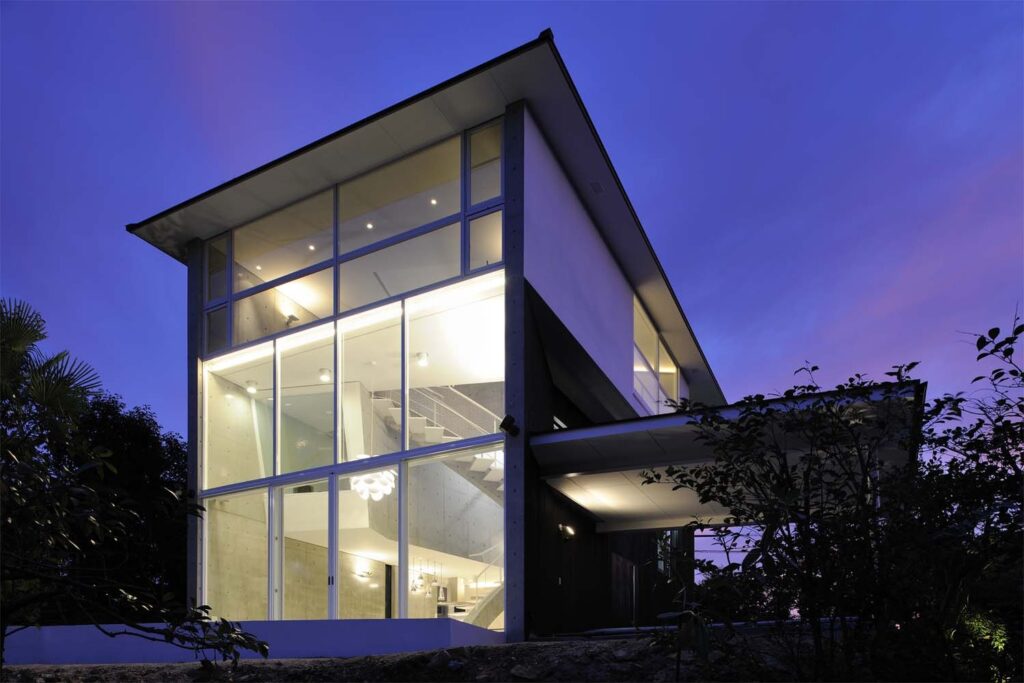
Clever stacking of oddly-shaped interior volumes inside a clean black-and-white facade gives the T-House by Atelier Boronski a grand sense of space that defies its small footprint. Limited by building regulations in the city of Kyoto, the architects of this concrete house chose an unconventional solution that has resulted in a dramatic triple-height living volume and hidden nooks for two terraces, a reflection pool and a spacious spa-like bathroom.

Various private rooms have been inserted inside the static main volume of the house, staggered and stacked throughout the space to create multiple levels. These volumes protrude beyond the shell, pushing windows outward to let in as much sunlight as possible. Their separateness is emphasized with contrasting external cladding in white plaster and black timber.
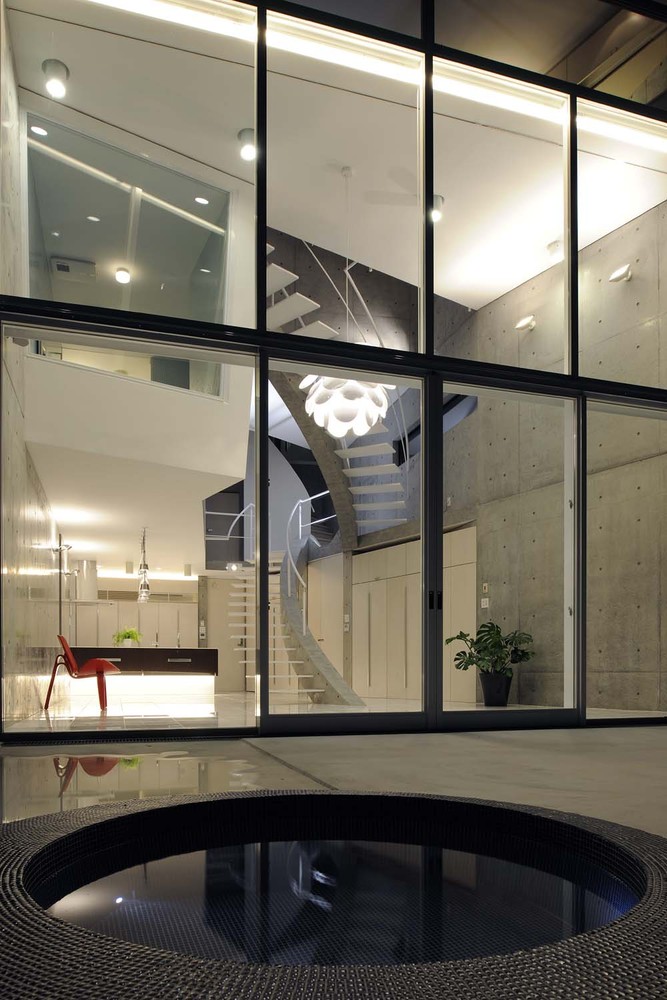
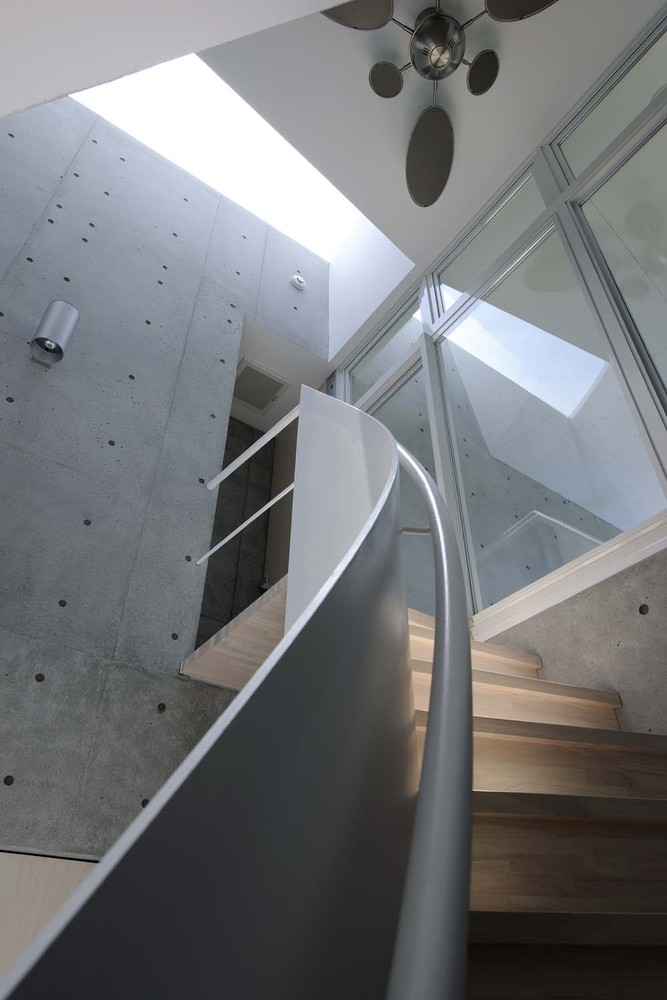
The home gets extra curb appeal from a louvered black screen that hides a garage door. Inside, raw concrete walls offer a bit of texture as well as an appealing sense of minimalism, helping all of the disparate shapes blend together into a cohesive and harmonic whole.
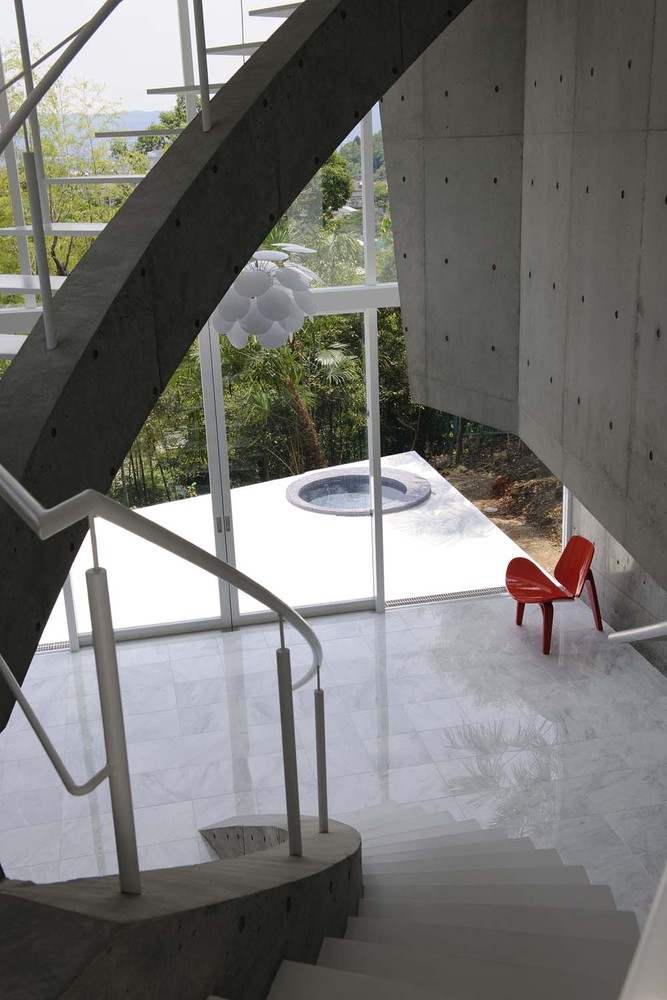
The common areas of the home are wide open like an atrium, a cantilevered staircase sweeping from the ground floor up to the third level. The two main bedrooms act as bridges through the void space of the home. On the third floor is a guest bedroom with its own terrace and a ‘viewing platform’ that allows guests to peek into the main space of the home below, and out into the city.
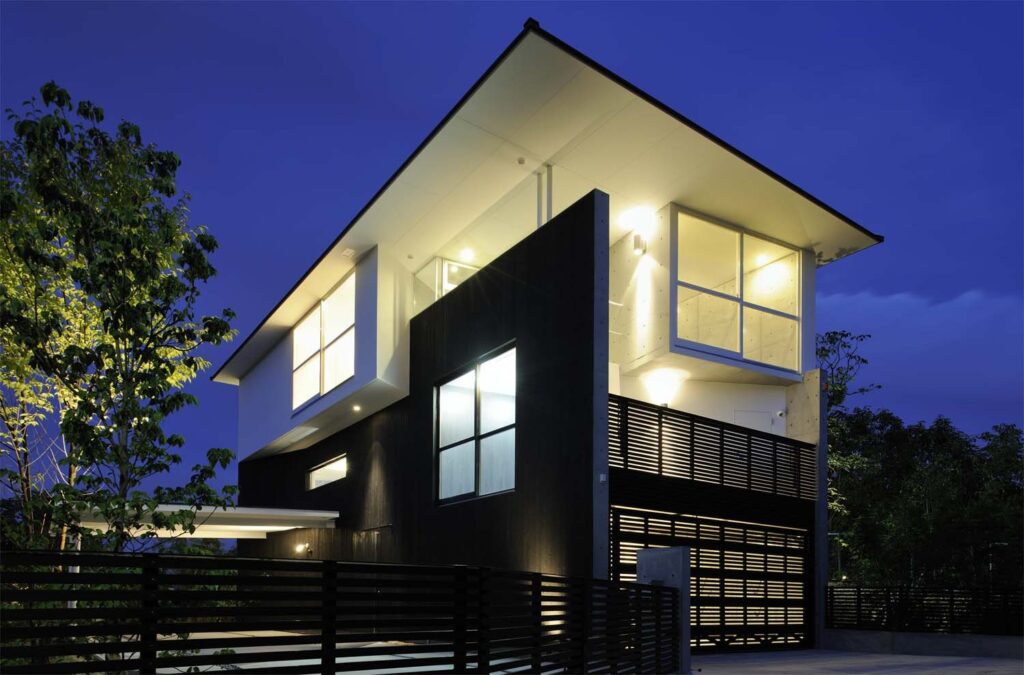
More from the architects
“On a small hill overlooking Kyoto city a suburban house for a young couple negotiates some tough ‘Historical’ design regulations. Many design points are pre-set. Therefore the house is conceived of as a simple container with private spaces lodged randomly within. But the randomness is orchestrated. Despite the external restrictions the fluidity of the interior void spaces and curved connecting stairways finally let the house feel very free.”
“Externally the house is mostly clad in traditional materials of burnt cedar boards (with clear lacquer finish) and white plaster. The garage door facing the street (to the West) is fully camouflaged as a wall of horizontal louvers that continues up to form the railing for the second floor terrace.”




